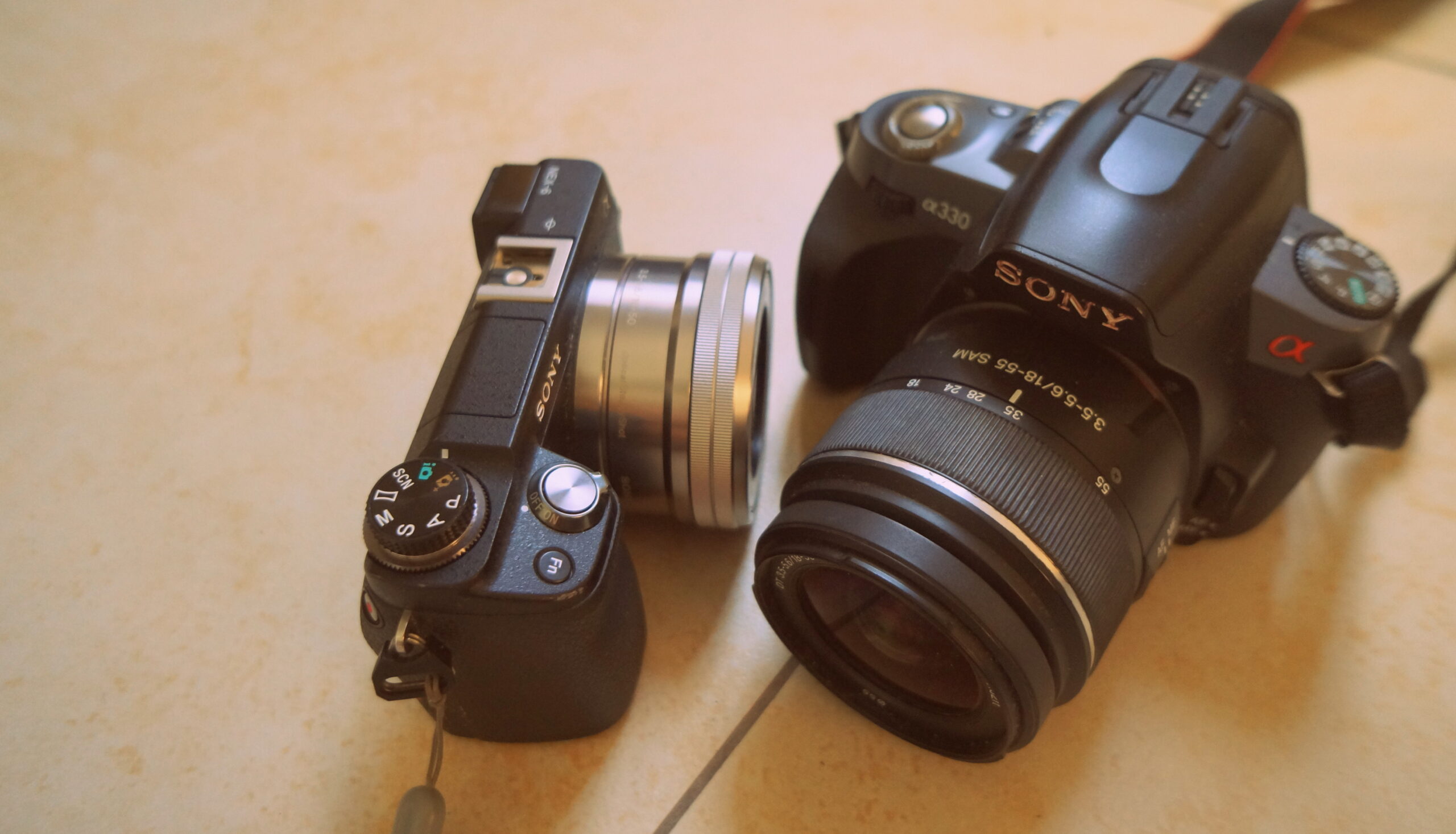Mirror vs. Mirrorless DSLR
In the realm of photography, the debate between traditional mirrored DSLR (Digital Single-Lens Reflex) cameras and the relatively newer mirrorless cameras is ongoing. Both types have their own set of advantages and disadvantages, catering to different needs and preferences of photographers. Understanding the fundamental differences between these two technologies is crucial for making an informed decision when investing in a camera system. In this article, we’ll delve into the disparities between mirror and mirrorless DSLRs, examining their respective strengths and weaknesses.
1. Anatomy and Functionality:
The primary discrepancy between mirror and mirrorless DSLRs lies in their internal mechanisms. Traditional DSLRs incorporate a mirror mechanism, which reflects light entering through the lens up into an optical viewfinder (OVF). When the shutter is pressed, the mirror flips up, allowing light to reach the image sensor, capturing the photograph. On the contrary, mirrorless cameras lack the mirror mechanism. Light passes directly through the lens onto the image sensor, which displays a digital preview of the scene either on an electronic viewfinder (EVF) or the rear LCD screen.
2. Size and Weight:
One of the most apparent distinctions between mirror and mirrorless DSLRs is their size and weight. Mirrorless cameras, by design, are typically more compact and lightweight compared to their mirrored counterparts. This reduction in size and weight is primarily due to the absence of the mirror box and optical viewfinder found in traditional DSLRs. For photographers who prioritize portability and convenience, mirrorless cameras offer a significant advantage, making them ideal for travel, street photography, and other situations where bulkier equipment may be a hindrance.
3. Autofocus Performance:
Autofocus (AF) performance is another area where mirrorless cameras have made substantial advancements in recent years. Traditionally, DSLRs relied on phase-detection autofocus, utilizing dedicated AF sensors within the camera body. Mirrorless cameras initially struggled to match the speed and accuracy of DSLR autofocus systems. However, with the advent of on-sensor phase-detection and contrast-detection autofocus technologies, modern mirrorless cameras now rival, and in some cases surpass, the AF capabilities of traditional DSLRs. Furthermore, the ability to cover a larger portion of the frame with AF points is a notable advantage of mirrorless systems.
4. Battery Life:
Battery life is often a concern for photographers, especially those who engage in extended shooting sessions or travel to remote locations without easy access to charging facilities. Here, DSLRs have traditionally held an edge over mirrorless cameras due to their simpler power consumption. Mirrorless cameras, with their electronic viewfinders and continuous sensor operation, tend to consume more power, resulting in shorter battery life compared to DSLRs. However, advancements in battery technology and power management have narrowed this gap, with some mirrorless models now offering respectable battery life.
5. Image Stabilization:
In-body image stabilization (IBIS) is a feature increasingly found in modern mirrorless cameras, offering a significant advantage over traditional DSLRs, which typically rely on lens-based stabilization systems. IBIS compensates for camera shake by shifting the sensor to counteract motion, resulting in sharper images, particularly in low-light conditions or when using longer focal lengths. The versatility of IBIS is especially beneficial for photographers using vintage lenses or those without built-in stabilization. While some DSLR lenses incorporate optical stabilization, it’s typically limited to certain focal lengths and may not be as effective as IBIS in all situations.
Comparison Table:
| Feature | Mirrored DSLR | Mirrorless DSLR |
|---|---|---|
| Anatomy and Functionality | Utilizes mirror mechanism and optical viewfinder (OVF) | No mirror mechanism; relies on electronic viewfinder (EVF) or LCD screen for preview |
| Size and Weight | Bulkier and heavier due to mirror box and OVF | More compact and lightweight; absence of mirror mechanism |
| Autofocus Performance | Relies on phase-detection autofocus | On-sensor phase-detection and contrast-detection autofocus |
| Battery Life | Generally longer battery life | Shorter battery life due to electronic components |
| Image Stabilization | Relies on lens-based stabilization (some models) | In-body image stabilization (IBIS) increasingly common |
Conclusion:
In conclusion, the choice between a mirrored DSLR and a mirrorless DSLR ultimately depends on the individual photographer’s needs, preferences, and shooting style. Traditional DSLRs offer familiarity, longer battery life, and a wide selection of lenses, making them a reliable choice for many professionals and enthusiasts. On the other hand, mirrorless cameras excel in portability, autofocus performance, and innovative features like in-body image stabilization. As technology continues to evolve, we can expect further advancements in both types of cameras, blurring the lines between them and providing photographers with even more options to express their creativity.
In essence, whether you opt for a mirrored DSLR or a mirrorless DSLR, the most important factor is to choose a camera system that aligns with your specific photographic requirements and inspires you to capture unforgettable moments with clarity and creativity.
Read more about tech and innovations : https://dailytrendspot.com/category/technology/
